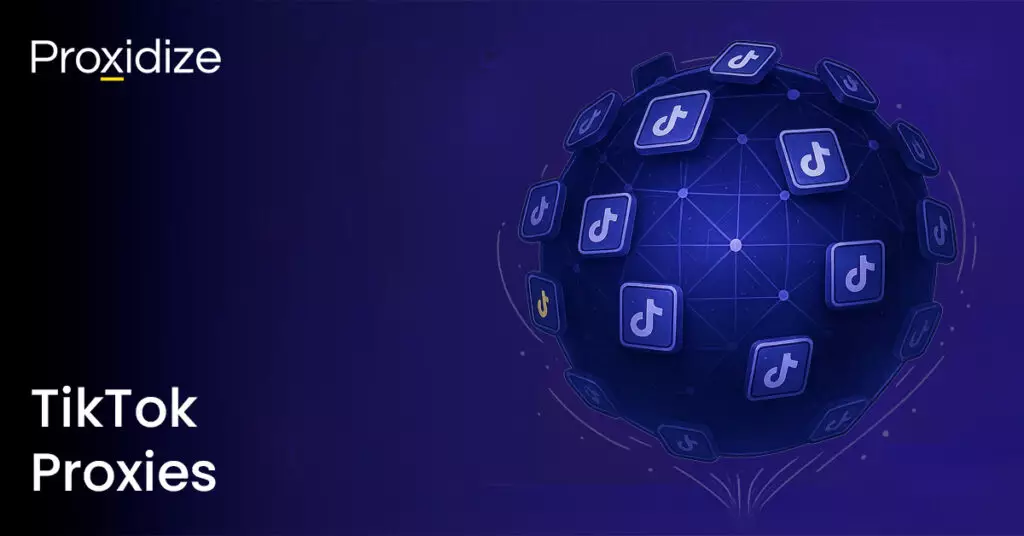Have you ever wondered how certain websites manage to handle heavy traffic without crashing? The answer lies in the use of a reverse proxy. If you’re unfamiliar with this concept, you’re not alone. Reverse proxies are an integral part of modern web infrastructure, and understanding how they work and why they are necessary can greatly benefit website owners and users alike.
In this article, we will walk you through the world of reverse proxies and their functionality, exploring how they work, the benefits they offer, and why they are a crucial component in handling website traffic. Whether you are a website owner looking to improve your site’s performance or a curious individual wanting to understand the inner workings of the internet, this article aims to provide a comprehensive explanation of reverse proxies and their significance.
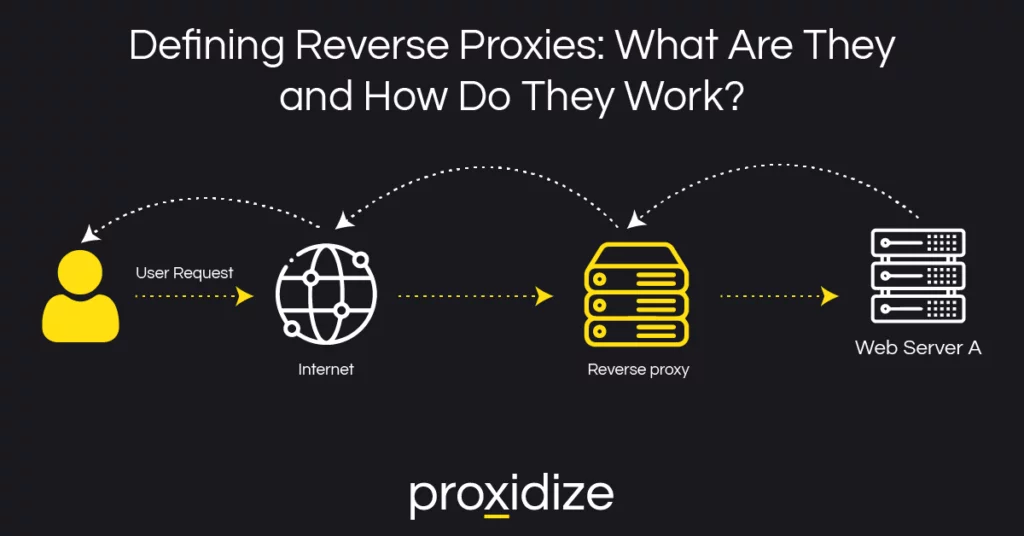
Defining Reverse Proxies: What Are They and How Do They Work?
To understand what a reverse proxy is, you need to know that it works by sitting between clients and servers, acting as an intermediary. One of its main purposes is load balancing, which distributes incoming traffic across multiple backend servers to ensure optimal performance.
This type of proxy server can also handle client requests for static content, such as images or HTML files, by serving them directly from its cache. Additionally, it can handle requests for dynamic content by forwarding them to the appropriate backend server, which generates the content in real-time. But how exactly does it work?
A reverse proxy server receives incoming requests from clients and forwards them to backend servers. It serves as a proxy server that handles incoming traffic on behalf of the backend servers. This way, it can filter and block unwanted requests or malicious traffic coming from the Internet, while allowing legitimate requests to reach the backend servers.
By sitting between clients and servers, a reverse proxy can also monitor incoming and outgoing traffic to analyze and even modify data on the fly. It also serves as an intermediary for authentication schemes, like OAuth 2.0, which allows users to log in to multiple web services using a single set of credentials.
Overall, reverse proxies play a crucial role in improving performance, scalability, and security for web applications.
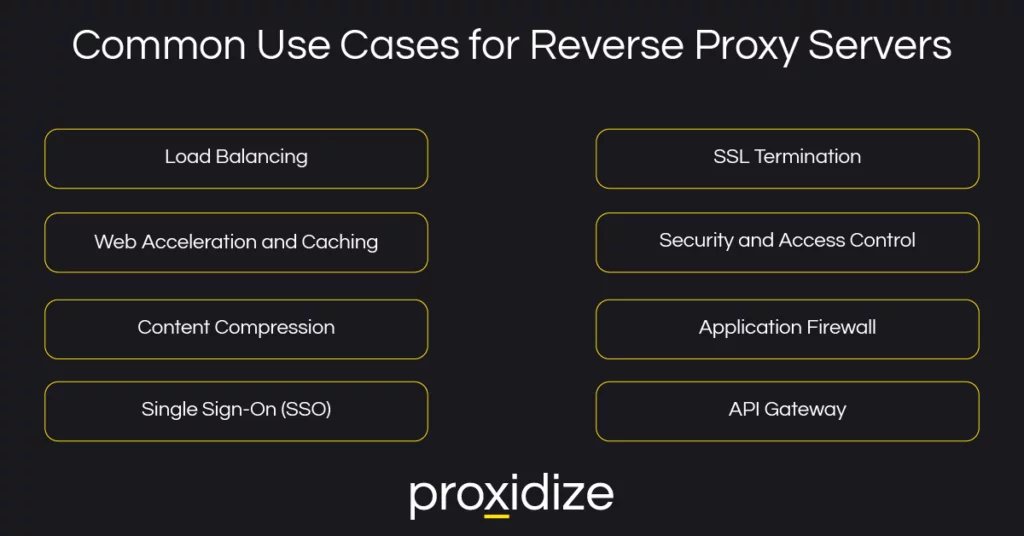
Common Use Cases for Reverse Proxy Servers
Reverse proxy servers play a crucial role in various aspects of web infrastructure, providing benefits such as enhanced security, load balancing, and improved performance. Here are some common use cases for reverse proxy servers:
- Load Balancing: Reverse proxies distribute incoming network traffic across multiple servers to ensure optimal resource utilization, prevent server overload, and improve application performance. This is particularly valuable in high-traffic websites and applications.
- SSL Termination: They can handle SSL/TLS encryption and decryption on behalf of backend servers, offloading the resource-intensive task of managing secure connections. This helps optimize server performance and simplifies the management of SSL certificates.
- Web Acceleration and Caching: These servers can cache static content, such as images, stylesheets, and scripts, reducing the load on backend servers and accelerating content delivery to users. This caching mechanism improves overall website performance and responsiveness.
- Security and Access Control: Acts as a protective barrier between the public internet and internal servers. They can implement security measures, such as web application firewalls (WAFs) and access controls, to defend against common web attacks and unauthorized access to sensitive resources.
- Content Compression: Can compress content before delivering it to clients, reducing bandwidth usage and speeding up page loading times for users. This is particularly beneficial for users with slower internet connections.
- Application Firewall: Implementing a reverse proxy with application firewall capabilities adds an extra layer of security by inspecting and filtering incoming traffic for potential threats and vulnerabilities, protecting against common web application attacks.
- Single Sign-On (SSO): Reverse proxies can facilitate single sign-on solutions, allowing users to access multiple applications with a single set of credentials. This simplifies user authentication and improves user experience.
- API Gateway: Reverse proxies often serve as API gateways, managing and securing communication between clients and backend APIs. They can enforce authentication, authorization, and traffic management for API requests.
- Server-side Google Tag Manager (GTM): A common example is the use of server-side Google Tag Manager (GTM server side), where a reverse proxy routes analytics and marketing data through your own server before it reaches third-party services. This setup can improve data privacy, control, and website performance.
These use cases highlight the versatility of reverse proxy servers in optimizing, securing, and managing web traffic in various scenarios. Depending on the specific requirements of a system, organizations may leverage reverse proxies for one or more of these purposes.

What are the Benefits and Drawbacks of a Reverse Proxy Server?
Discovering reverse proxy servers involves understanding their advantages and considerations. Let’s take a quick look at their role, highlighting both the positives and potential challenges. Whether you’re aiming for improved performance or navigating complexities, a balanced approach is key.
Benefits of a Reverse Proxy Server
- Improved Website Performance: Reverse proxy servers act as intermediaries, optimizing performance by efficiently routing traffic. This reduces backend server loads, preventing bottlenecks and ensuring a smooth user experience.
- Enhanced Security: These servers serve as gateways, providing an additional layer of security. They filter and block malicious traffic, safeguarding against cyber threats and protecting private data centers by preventing direct access.
- Efficient Load Balancing: They offer efficient load balancing capabilities, distributing incoming traffic across multiple servers. This increases scalability, ensures high availability, and optimizes resource utilization, preventing server overload.
- Scalability: Facilitates scalability and resilience by distributing requests among backend servers and managing traffic efficiently.
Drawbacks of a Reverse Proxy Server
- Increased Complexity: The implementation and maintenance of these servers introduce complexity to the infrastructure. Proper configuration and ongoing management are necessary for optimal functionality.
- Single Point of Failure: Relying on a single reverse proxy creates a potential point of failure. Downtime or issues with the server can disrupt web services, highlighting the importance of redundancy.
- Latency: In certain scenarios, reverse proxy servers may introduce latency due to additional processing. This may slightly delay communication between clients and web servers.
- Resource Overhead: Running a reverse proxy consumes resources, particularly in high-traffic environments. Sufficient resource allocation is required for smooth and efficient operation.
In summary, a reverse proxy server brings multiple benefits, including improved website performance, enhanced security, and efficient load balancing. However, organizations should be mindful of potential drawbacks such as increased complexity, a single point of failure, and considerations regarding latency and resource overhead.
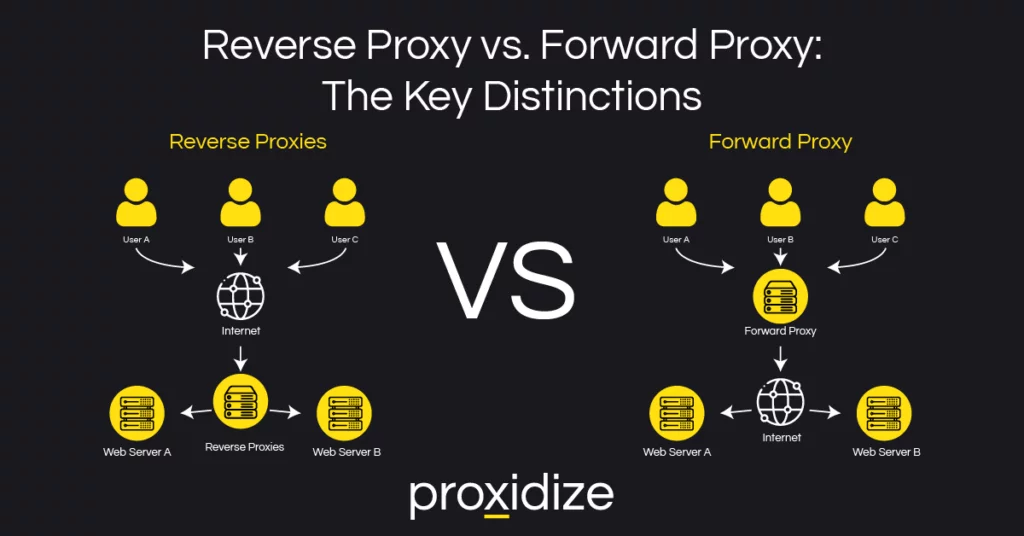
Reverse Proxy vs. Forward Proxy: The Key Distinctions
To understand the differences between a reverse proxy and a forward proxy, it’s important to grasp the key distinctions in their roles and functionalities. A reverse proxy acts as an intermediary between external clients and internal servers. Its primary function is to handle incoming requests from the internet and distribute them to the appropriate server within the internal network.
In contrast, a forward proxy is positioned between internal clients and external servers. It facilitates internet activity on behalf of internal clients by intercepting their requests and forwarding them to external servers.
While both enhance performance and provide load-balancing services, they differ in terms of access control and header field manipulation. Reverse proxies are designed to protect internal resources and provide a single point of access, while forward proxies offer anonymity and caching capabilities to internal clients.
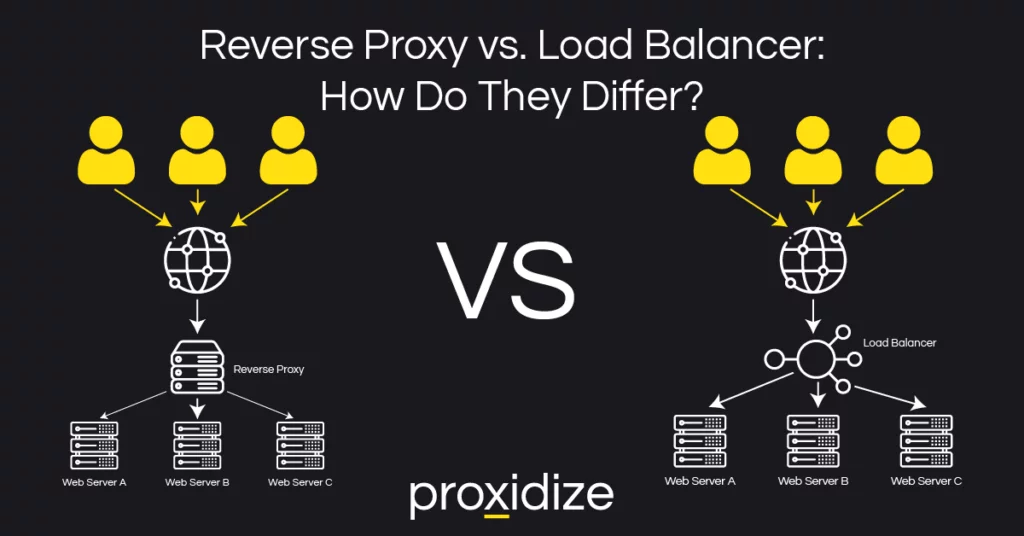
Reverse Proxy vs. Load Balancer: How Do They Differ?
Now we will compare the differences between a reverse proxy and a load balancer. Both play important roles in managing incoming requests from clients and improving the performance of high-traffic websites.
A reverse proxy acts as an intermediary between clients and servers, receiving incoming browser requests and forwarding them to the appropriate servers. It can also perform additional functions such as basic HTTP access authentication, caching, and SSL termination.
Reverse proxies are often used to distribute inbound traffic among multiple servers, ensuring that the workload is evenly spread and preventing any single server from being overwhelmed. By handling requests on behalf of servers, they can also improve security by shielding the server’s IP address from the outside world.
On the other hand, a load balancer is solely focused on distributing incoming requests among multiple servers. It uses various algorithms to distribute the workload, such as round-robin, least connections, or IP-based session persistence. Load balancers can greatly improve the performance and availability of a website by efficiently distributing the incoming traffic and preventing any single server from becoming overloaded.
Conclusion
In conclusion, reverse proxies play a crucial role in enhancing security, performance, and scalability for web applications. By acting as an intermediary between clients and servers, they efficiently distribute incoming requests, cache content, and protect against malicious attacks.
While they have several benefits, such as improved load balancing and simplified network architecture, it is important to consider the potential drawbacks, such as increased complexity and potential single points of failure. Ultimately, the decision to implement a reverse proxy should be based on the specific needs and requirements of the application.



